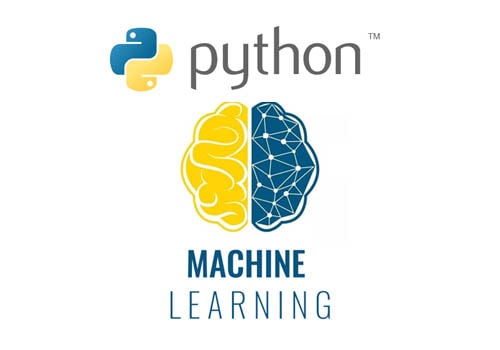
Raushan Ranjan
Raushan Ranjan
Research Scientist with over 2 years of experience specializing in Natural Language Processing (NLP) and Computer Vision. Currently contributing to a leading search engine’s AI project at Turing. Proven expertise in developing and deploying machine learning models, designing end-to-end data pipelines, and managing large-scale datasets. Adept at using a variety of tools and technologies, including Python, Spark, AWS, and multiple ML frameworks. Strong background in customer profiling systems and quality control through Named Entity Recognition. Holds a Master’s in Information and Communication Technology from DAIICT and a Bachelor’s in Computer Science Engineering from UPES. Skilled in leadership, communication, and team management.
- Role
Data Scientist
- Years of Experience
3 years
Skillsets
- Machine Learning - 3 Years
- Predictive Modeling - 3 Years
- Recommendation Systems - 3 Years
- Research - 2 Years
- Landing Pages A/B Testing - 2 Years
- Dialogflow - 2.0 Years
- FastAPI - 3.0 Years
- LLMs - 3.0 Years
- Pytorch - 3.0 Years
- Python - 4.0 Years
Vetted For
- Roles & Skills
- Results
- Details
- Robotics Simulation DeveloperAI Screening
- 50%
- Skills assessed :Large Language Models, Isaac Sim, NVIDIA Omniverse, Problem Solving Attitude, Python
- Score: 50/100
 Python
Python- 100%
Codility - Python Programming(Level 1)
- Score: 100/100
Only 11.7% of the talents can score above the benchmark
- View Detailed ReportView Report
Only 11.7% of the talents can score above the benchmark
 The objective of this assessment :
The objective of this assessment :
The Python assessment evaluates a candidate's proficiency in the Python programming language. It assesses their understanding of Python syntax, data types, control structures, functions, and object-oriented programming concepts.
 Code Review
Code Review- 75%
Codility - QA Logical Code Review(Level 1)
- Score: 75/100
Only 8.6% of the talents can score above the benchmark
- View Detailed ReportView Report
Only 8.6% of the talents can score above the benchmark
 The objective of this assessment :
The objective of this assessment :
This assessment evaluates a candidate's ability to identify and resolve software bugs effectively. It assesses their understanding of debugging techniques, error analysis, and troubleshooting methodologies.
 ML Engineer with Python
ML Engineer with Python- 67%
iMocha - ML Engineer with Python(Level 1)
- Score: 67/100
- View Detailed ReportView Report
Language & Communication
- 78%
Versant - Language & Communication(Level 1)
- Score: 62/80
- View Detailed ReportView Report
Professional Summary
- Mar, 2024 - Present1 yr 1 month
Data Scientist
Turing - Jun, 2022 - Jan, 20241 yr 7 months
Associate Data Scientist
Ecom Express Ltd. - Jun, 2021 - Jun, 20221 yr
Data Science Research Assistant
Smart City Lab, DAIICT
Applications & Tools Known

Python

NetBean-IDE

AWS Cloud

AWS (Amazon Web Services)

MySQL

Git

Visual Studio Code
.png)
Apache Spark

Amazon DynamoDB
Work History
Data Scientist
TuringAssociate Data Scientist
Ecom Express Ltd.Data Science Research Assistant
Smart City Lab, DAIICTMajor Projects
Delivery Center Prediction Model
Ecom Express- Address, city, state, pin code -> GPT 2 -> Delivery center prediction.
- Trained the GPT2 model from scratch using PAN India address text.
- Reducing training time by 50% using different optimization strategies.
- Improved model performance by 40% using ONNX runtime inference.
- Automated the training process using AWS Sagemaker pipelines stream Lining the model training on daily basis to avoid data drift issuess.
- Deployed the API on AWS Lambda providing scalable and cost-efficient
- Inference capabilities to handle 10-25 Lakh hits daily as per load.
- Contributed to a reduction in misroutes from 6% to 2.8%.
Named Entity Recognition for QC of Reverse Pickups
- Reduced quality check errors by 11%.
- Develop multiple NLP models with over 2,00,000 data points using platforms like Spacy and HuggingFace with 93% accuracy.
Bone Segmentaion from Ct-Scan images
Dhirubhai Ambani Institute of Information and Communication Technology- The goal of the project was to assist medical professionals with total knee replacement surgery by accurately segmenting the bones at the knee joint.
- To achieve this goal, I researched various segmentation techniques and settled on using U-Net 3D and 2D segmentation models due to their accuracy and efficiency.
- The segmentation models were developed using Python, TensorFlow, and deep learning techniques.
- CT scan images were used to train the segmentation models, with a focus on accurate bone segmentation at the knee joint.
- Once the models were trained, they were used to segment bones in new CT scan images, providing medical professionals with accurate 3D and 2D images of the bones at the knee joint.
- The segmentation models were evaluated for accuracy, sensitivity, and specificity to ensure their reliability and effectiveness in assisting with total knee replacement surgery.
The project I worked on involved the segmentation of bones from CT scan images to assist medical professionals with total knee replacement surgery. The project utilized various segmentation techniques, including U-Net 3D and 2D segmentation, to segment all bones at the knee joint. Python, TensorFlow, and deep learning were used to develop the segmentation models.
Here are some details about the project:
Education
Master of Technology, Information and Communication Technology
Dhirubhai Ambani Institute of Information and Communication Technology (2022)Bachelor of Engineering, Computer Science Engineering with specialisation in cyber security and forensics
University of Petroleum and Energy Studies (2018)